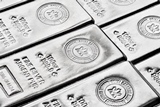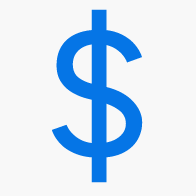
The Week Ahead In Gold
The gold market has been on its heels in recent weeks, as equities have pushed to fresh all-time highs and overall risk aversion following the June 23rd Brexit referendum has dissipated. While we expect dips in gold to continue to be bought by investors, there is the possibility of additional downside in the yellow metal.
Recent price action in gold may also be indicative of position squaring and profit taking before two key central bank meetings this week.
On Wednesday, the U.S. FOMC will conclude its two day meeting on monetary policy. Fed Fund futures contracts show only a miniscule chance of a rate hike this week, but the odds of another rate hike in the coming months appear to be on the rise. Of course, general opinions on the pace and timing of further rate hikes can change quickly, and investors will be paying close attention to the central bank’s commentary regarding rates.
A more hawkish sounding Fed could potentially boost the dollar and drive selling in gold and precious metals, while commentary that is more on the dovish side of the ledger could potentially put a halt to the recent dollar rally and give metals a boost.
The Bank of Japan will also be meeting this week and speculation has grown that the central bank will announce further easing measures. The outcome of this meeting could be particularly interesting as either outcome could be considered bullish for gold prices.
If the BOJ does ease further, rates will be driven further into negative territory in another sign that the era of global money printing and low, zero or even negative interest rates is far from over.
On the other hand, if the BOJ stands pat for now, it could give the yen a boost, and gold prices frequently show a positive correlation to the Japanese currency.
While the ECB did not ease further at its policy meeting last week, it did seemingly leave the door wide open for further stimulus measures as the region continues to fight deflationary pressures and the effects of Brexit remain unknown.
The bottom line in this really seems to be: How much can the U.S. raise rates while so many other nations are still easing?
It would seem to make sense that the path of additional hikes by the Fed will remain very slow and incremental. Overly aggressive changes to monetary policy could not only put the brakes on domestic economic activity, but a divergence between the U.S. and other nations could potentially stoke volatility across markets including currencies, interest rates and more.
While gold investors may be taking a wait and see approach this week ahead of these central bank meetings, we would expect buying interest in the yellow metal to resume.
On another note, as the U.S. Presidential election approaches, it stands to reason that gold may see further interest as the uncertainty surrounding the potential outcome drives investors from risk assets into perceived safe havens.
There have already been numerous pieces written about the potential effects on gold that a Trump victory could have, with an analyst from ABN Amro even suggesting that a Trump Presidency could push gold prices higher by $500 per ounce or more.
This is a topic that will likely drive gold in the coming months, as any significant changes in monetary policy are unlikely. In the short-term, however, gold will likely take its cues from central bank activity, equity markets and overall risk appetite or aversion.




